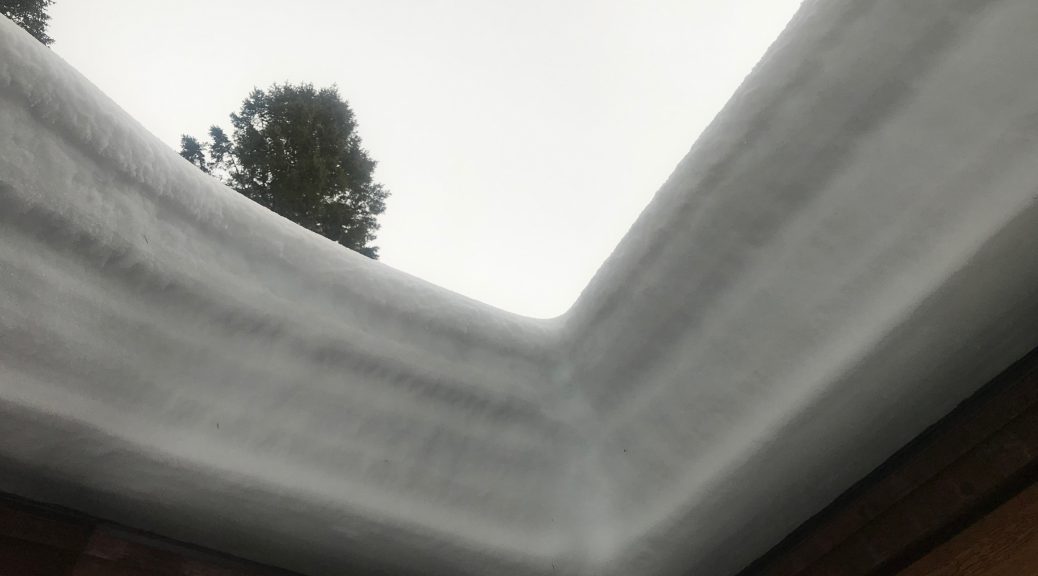
Snow Loads for Star Valley Roofs
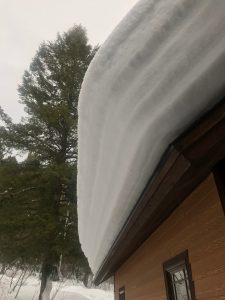
It is mid-summer in Star Valley and our winter snows are just a fading memory. However , new home construction is underway and plans need to incorporate the inevitable snowy Star Valley Winters ahead.
I have been recording precipitation, including snowfall for the past several years at our home in Star Valley Ranch. Using my observations along with the official cooperative weather observer located 3 miles southeast of Bedford with a record of over 30 years, I can with some confidence provide a maximum winter snow load for our area.
The roof load is calculated by the total weight of the water being held in the accumulated snow.
Water weighs 64 pounds per cubic foot. To come up with how much weight on a roof the method is to calculate the depth of water held in the snow on a roof per square foot. For every foot of water that resides in the roof snow pack, would require engineering for 64 pounds per square foot.
Evaluating just the short period of record at my home, this past winter as can be seen by the graph for the period from November 1-March 15 about 180 inches of snow fell.
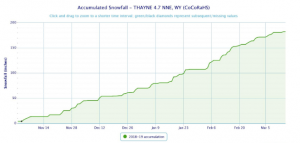
The actual accumulated precipitation, melted snow and rain, for that same period was around 12 inches.

Thus if all the precipitation remained on the roof through the middle of March the load per sq foot would be around 65 pounds. However the combination of some melting on warmer days and some rain versus snow, that would result in somewhat less of a load.
The winter of 2016-2017 was a wetter and snowier winter on the Ranch.
I measured over 220 inches of snow for the same period and the total precipitation was around 17 inches. Again this amount of precipitation would be the upper limit that would have accumulated on a roof. It actually would be less again due to melting during warm spells etc. A 17 inch water load would result in 90 lbs per sq foot.
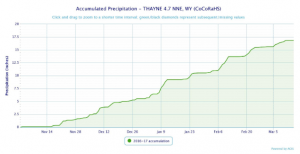
Examining the long term weather station just southeast of Bedford where records go back over 30 years we can look at two graphs,
- The greatest accumulated precipitation was about 18 inches in the winter of 1985-86. Compare to this winter of nearly 15 inches.
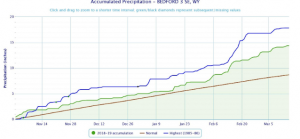
- The snowiest year at the Bedford station was in 1977-78 for the period Nov. 1-March 15th when about 20 feet fell
 It appears that Star Valley Ranch typically is a little snowier than the Bedford station, at least at my home which is at an elevation of 6350 feet.. Thus, a reasonable upper limit of 20 inches of precipitation could fall in the period from Nov 1-March 15th. If in fact this all remained on the roof in the form of snow and ice then the roof would need to be engineered for about 100 lbs per sq foot. This would be near the upper limit as with the melting and some rainfall the total weight for that amount of accumulated precipitation would be somewhat less. How much less would depend on the character of the winter. Given these data, and providing some buffer, a roof engineered for around 110 lbs/sq/ft in Star Valley should be adequate to handle the snow load of extreme winters. Thus it is important that the roof be engineered to support the expected snow load in the most extreme winter snowfall accumulation scenario.
It appears that Star Valley Ranch typically is a little snowier than the Bedford station, at least at my home which is at an elevation of 6350 feet.. Thus, a reasonable upper limit of 20 inches of precipitation could fall in the period from Nov 1-March 15th. If in fact this all remained on the roof in the form of snow and ice then the roof would need to be engineered for about 100 lbs per sq foot. This would be near the upper limit as with the melting and some rainfall the total weight for that amount of accumulated precipitation would be somewhat less. How much less would depend on the character of the winter. Given these data, and providing some buffer, a roof engineered for around 110 lbs/sq/ft in Star Valley should be adequate to handle the snow load of extreme winters. Thus it is important that the roof be engineered to support the expected snow load in the most extreme winter snowfall accumulation scenario.